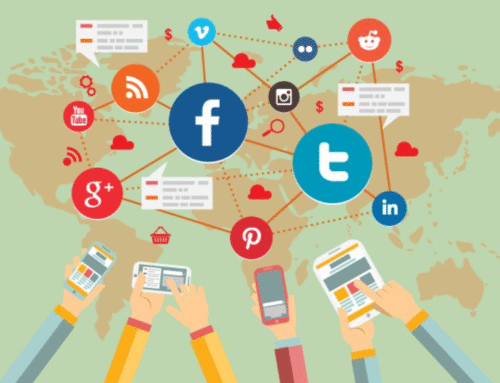Smart Ecommerce Solutions 2025: Avoid Costly Mistakes

Buying an ecommerce solution has become more critical and more difficult as time goes on in 2025. Making the wrong decision entails considerable investment, extremely carp performance, and limited expansion capabilities as these platforms and instruments abound. The right choice is, conversely, a guarantee of balanced and maximum development, increased revenue, and a better consumer shopping experience.
66Marketings helps businesses in this articulation of commerce with customized solutions meant for their individual business needs. This article reviews the most critical aspects of e-commerce in the selection process of an e-Commerce solution in 2025.
What Are Ecommerce Solutions?
Ecommerce solutions are generally defined as the business platforms and services which allow a business to sell products or services online. Such solutions include application programs like website builders, product listing engines, commercial shopping carts and payment gateways. But by 2025, ecommerce will now be redefined to reflect the growing application of today’s artificial intelligence, automation and data driving intelligence in improving customer experience using such solutions. Marketing through inventory management may now even be possible within one confined system.
Why Choosing the Right Ecommerce Solution Matters in 2025
By 2025, online selling has grown to be one of the toughest competitive arenas. Choosing the right ecommerce solution determines whether your company will flourish or falter. A good, reliable platform supports scaling, quick-load times, and solid customer support-the three pillars that keep you ahead of the competition. The flip side is if you made the wrong decision, you would have had to battle technical glitches, limited customization, or some hidden costs! Consider your ecommerce solution as the foundation of your store-if it is weak, everything built upon it will face cracks and eventually fall.
Step 1: Define Your Business Needs
- In 2025, the company’s needs should be defined in detail before making a decision on an ecommerce solution.
- With that said, requirements will vary depending on size, industry, and growth objectives.
- For example, a startup may just need an easy existence with a functional store up and running.
- Larger businesses, unlike startups, will demand sophisticated requirements like multi-vendor support and international payments.
- Outlining goals, budgets, and growth plans ensures that the platform selected matches the company’s long-term vision.
Step 2: Evaluate Ease of Use
Many visitors do not have advanced technical knowledge. Rather, the system should be straightforward so that the business owner may easily upload new products to the catalog and track orders or design the website. Modern online business solutions like drag-and-drop builders, AI-powered assistance, and user-friendly dashboards make therefore store management simple. A complicated solution wastes time and energy. When you go with user-friendly platforms, you’ll end up with more time for selling and growing your business instead of fighting through technical endeavors.
Step 3: Consider Scalability for the Future
Growth is a primary objective for any business, which is why scalability gets premium consideration when choosing ecommerce solutions in 2025. A great platform should be able to handle increasing traffic on the website, larger catalogs of products, and sales across countries, all this without slowing down. If your solution does not grow as your business grows, it will eventually hinder your potential. Choosing a scalable platform guarantees long-term success, making sure your store is good for the longer haul as demand rises.
Step 4: Payment Options and Gateways
Payment openness will be the prime consideration in 2025. A consumer may want to choose his payment option from credit cards, digital wallets, or even buy now, pay later facilities. If the e-commerce solution does not provide a host of flexible and secure payment gateways, you will risk losing one of the best sales opportunities that would come around for your business. Added to that, providing multiple currencies becomes very necessary for businesses aiming at international markets.
Step 5: Security and Compliance
- Trust is thus the heart of e-commerce, making security the first priority of 2025.
- Because tighter measures are now in place with regards to sharing information, shoppers tend to be a little more cautious about sharing information.
- As for reliable e-commerce solutions, it comes with both SSL certificates and PCI compliance standards as well as strong encryption.
- It is also essential to adhere to standards such as GDPR and CCPA to avoid potential legal issues.
- Advanced security features not only protect customers but also increase trust for the brand.
Step 6: Integration With Marketing Tools
E-commerce firms need strong marketing to grow in the future, among other things. By 2025, the solutions like yours should have marketing features integrated right inside them. Social media shop integrations, SEO optimization plugins, and customized analytics platforms are some of the most popular tools currently being connected. Email marketing and customer-relationship management platforms are also a must-have for nurturing the leads. Without a marketing integration, then, a long-once-simple marketing campaigning becomes off course, or probably less effective anyway.
Step 7: Customer Support and Reliability
The unremitting presence of customer support cannot be undersold in 2025’s selection of booming e-Commerce platforms. Technical glitches, downtime, or service delays can make you lose leads and ruin your reputation- all of which could have been avoided if they could have been resolved much faster.
Exceptional platforms go a long way to extend 24/7 availability that includes chat support, extensive knowledge bases, and artificial intelligence for the resolved troubleshooting of user-related services on the fly. The safe havens of purposeful support serve as a defogged ingot of fire’s calm assurance with warranted rest, even if just moments of downtime might cause catastrophic harm.
Top Ecommerce Solutions 2025
| Feature | Shopify | WooCommerce | BigCommerce | Magento | Wix eCommerce |
| Ease of Use | Very Easy | Moderate | Easy | Complex | Easy |
| Scalability | High | High | Very High | Enterprise-Level | Moderate |
| Payment Options | Wide Range | Wide Range | Wide Range | Customizable | Moderate |
| Security | Strong | Depends on plugins | Strong | Very Strong | Moderate |
| Cost | Monthly Plans | Hosting Costs | Monthly Plans | High Development | Affordable Plans |
Common Mistakes to Avoid in 2025
- Many businesses make the mistake of choosing ecommerce solutions based only on price.
- Focusing only on cost often leads to poor performance and missing essential features.
- Ignoring mobile optimization is another error, even though mobile shopping dominates in 2025.
- Overlooking customer support and scalability leaves businesses stuck with outdated systems.
- Careful research and testing help avoid these mistakes and ensure long-term success.
How to Compare Different Ecommerce Solutions
While the pricing plans are important when comparing the ecommerce platforms in use in 2025, testing the platform for usability, assessing customer evaluations, and generally looking at long-term costs are equally if not more important. Free trials provide a wonderful opportunity to test anything before sealing the deal. Independent reviews give the raw, unembellished truth about functionality and reliability. The extent of customization flexibility offered by the solution in question is another important factor because each brand has different needs.
Hidden Costs You Should Watch Out For
Where some ecommerce solutions seem cheap at onset, it is the hidden costs that amp themselves up really fast. In 2025, businesses must be super careful about these expenses. Transaction fees, certain themes, premium plugins, and integration costs are a few examples. Development and maintenance costs may come as a shock to you if your platform is updated really often. Be sure to consider the total cost of ownership before making a decision, not only the entry fee. In doing so, you’ll be able to pinpoint these hidden expenses, plan your budget more accurately, and steer clear of unpleasant surprises.
The Role of Mobile in Ecommerce 2025
Mobile commerce is no longer an option; in 2025 it will be the primary method by which customers shop. If your ecommerce solution is not mobile-optimized, you’re losing tons of potential sales. Good platforms offer responsive design, fast load times, and smooth mobile checkouts. Mobile optimization for navigation and payment is also very crucial. Some solutions even offer dedicated mobile applications on which one can run their store on the go. When taken care of, the mobile optimization not just results in better conversion rates but also reinforces customer satisfaction in our fast-paced world today.
Customization and Design Flexibility
Your online store in 2025 will have to exude your brand identity, which is so much more than just a gorgeously bloated template that looks much like every other one. You need to opt for the best ecommerce solutions that come with an ample range of options to design your website. Features like drag-and-drop editors, responsive templates, and the capacity to insert custom code means businesses can create a unique online store. Customization could, then, go all the way down to branding, i.e., logos and the display of a product.
Future Trends Shaping Ecommerce Solutions in 2025
Ecommerce solutions continue to evolve at an unprecedented pace with the promise of keeping in focus future trends. In 2025, artificial intelligence will take personalization to the next level by providing product recommendations based on individual shopper preferences. Augmented reality allows customers to see products virtually before the decision-making process. Voice commerce is already beginning to make its way into the mainstream, enabling shopping without any hand movements. Omnichannel solutions that seamlessly bring together the facets of the physical and digital world will soon be indispensable.
Conclusion
In 2025, putting together an ecommerce solution will therefore be more than just a technical decision; it is a long-term commitment to your business success. If you prioritize usability, scalability, security, and integrations, you will avoid costly mistakes and prepare your store for the future. The ecommerce scene may keep changing, but with the right platform, you will always be one step ahead of trends and competition. Always remember that your solution is more than a piece of software; it is na foundation for your digital business and a partner in your journey toward success.
Frequently Asked Questions (FAQs)
If at all, in the year 2025 what would be your most significant consideration for an ecommerce solution?
Scalability is the most vital aspect. Scale should be built-in with your platform, allowing you to manage overwhelming business traffic and future technology evolution without restrictions.
Surely, does free ecommerce services scale well for future growth?
Free schemes are the solution for testing, though they are often not robust enough into advanced features, security systems, and scaling. When you grow serious, you have to choose a paid solution most of the time.
How do I know if an ecommerce solution is secure?
Look for the SSL certificate or PCI compliance. It will also be updated regularly. Trusted platforms offer encryption and fraud protection as well.
Why is mobile optimization so important in 2025?
Most shoppers tend to browse and buy via their phones. A mobile-bound solution, however, will ensure rapid checkouts, great user experiences, and ultimately higher conversion rates.
Will I be able to change ecommerce solutions later, even after choosing the wrong one?
Sure, it is a cost then in wavering between solutions; it takes time too. An upfront investment of time and effort avoids the migration hassle later on in comparing solutions.








